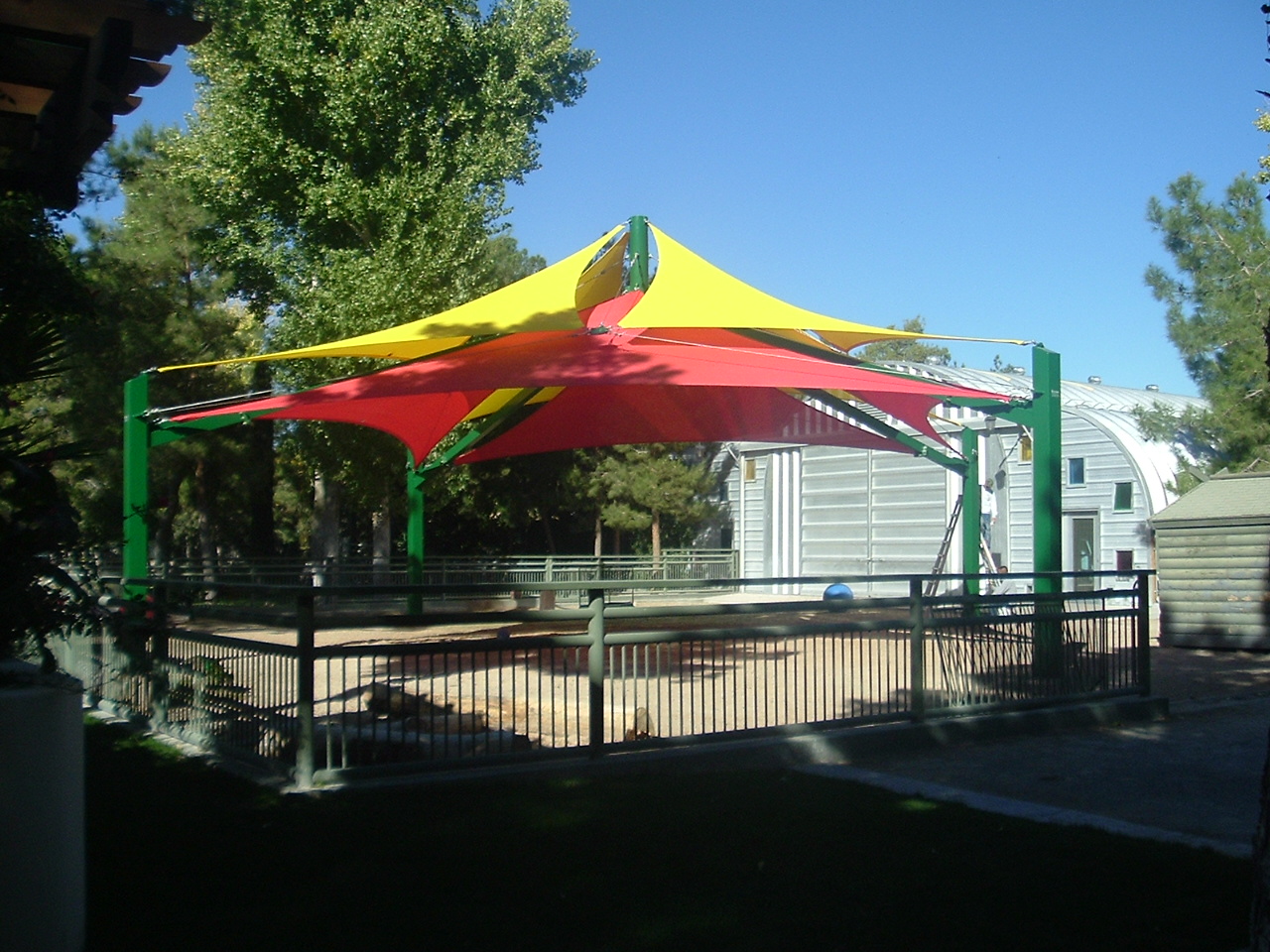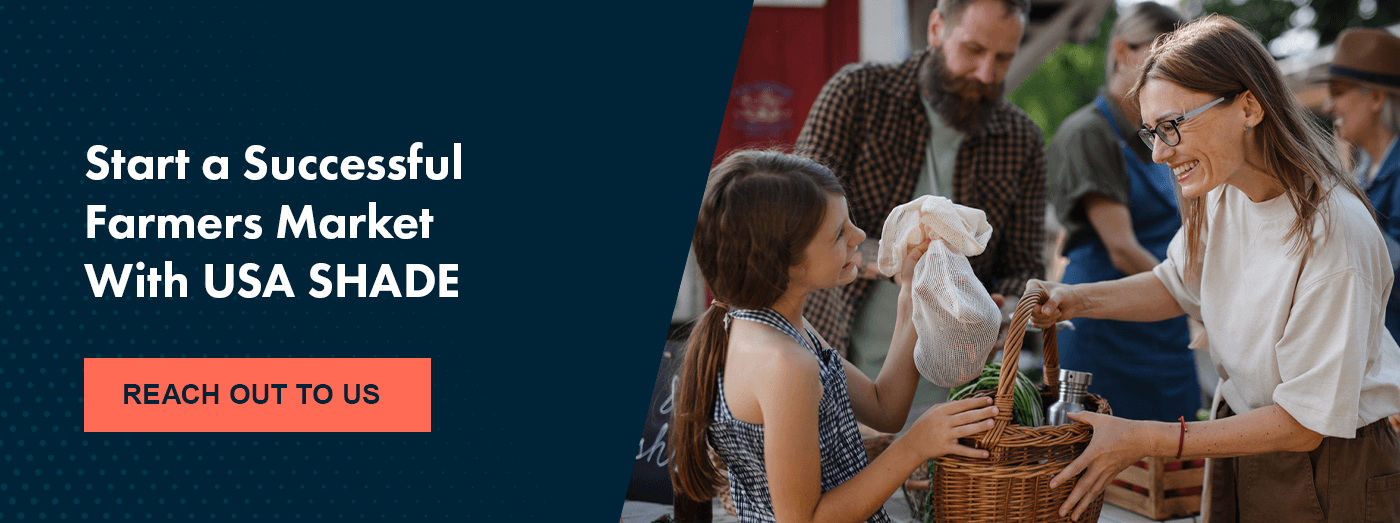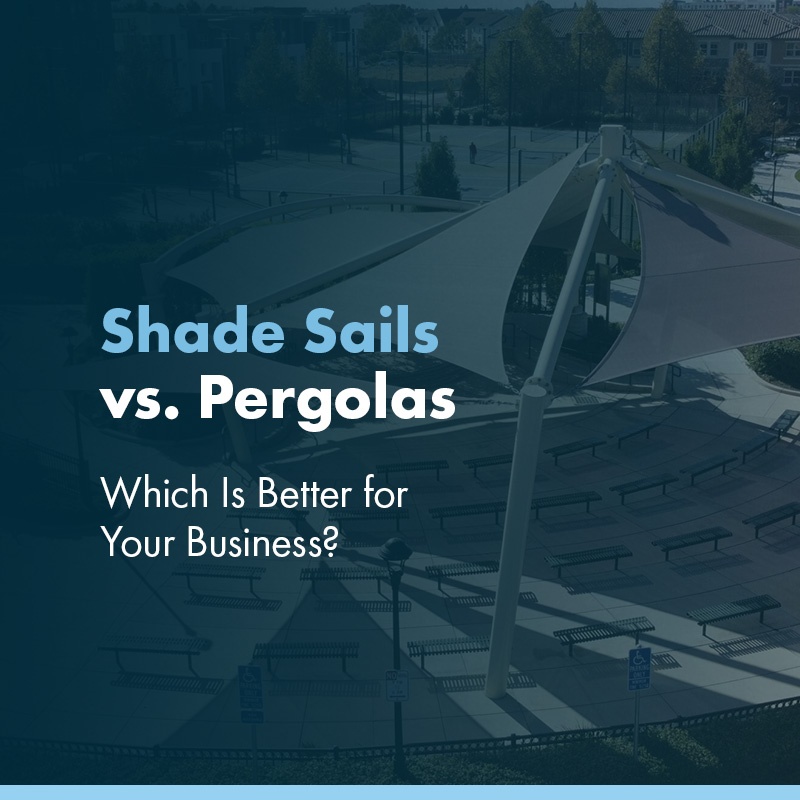
Farmers markets have become increasingly popular, with many people preferring the fresh, seasonal produce they offer. They also shorten the distance from farm to table. Transporting food generates approximately 19% of food-related emissions, leaving many eco-conscious people to search for more sustainable ways to stock their refrigerators and pantries.
If your organization is considering starting a farmers market, it is important to conduct thorough research and planning. Our guide will explain the process and highlight some key considerations during the design stage to ensure greater success.
Understanding Farmers Market Architecture Design
Farmers markets provide more than just fresh produce and homemade products — they offer an experience. Designing a space that allows vendors to create attractive product displays and customers to walk around comfortably is crucial for the success of your organization’s market. Some key architectural elements to consider in a farmers market design include:
- Communal zones: Many farmers markets offer ready-to-eat food options, such as frothy coffees, gourmet sandwiches and flaky croissants. Enable customers to enjoy these delicious treats by ensuring a shaded space with adequate seating.
- Restrooms: A standard requirement for public spaces is functioning restrooms. As people with different abilities and young children will likely visit, these facilities must be accessible to all.
- Waste management areas: Food hygiene is a significant priority at farmers’ markets. Ensure there is an allocated space for food waste, trash and recyclables.
- Parking spaces: Vendors and customers will need to park their vehicles in a secure lot. As some people may be at the market all day, offering shaded parking areas will further benefit visitors and vendors.
- Storage areas: Nonperishable items and bulky equipment can be challenging to transport at the end of each day. Offering secure storage helps simplify setup and teardown for vendors.
- Lighting: If the farmers market will be held outdoors and open past sundown, adequate lighting can help keep visitors and vendors safe.
Farmers markets can be held indoors or outdoors, depending on the season, weather and space availability.
How to Start a Farmers Market
Starting any entrepreneurial venture requires significant time and effort. These steps will streamline the process of opening a farmers market.
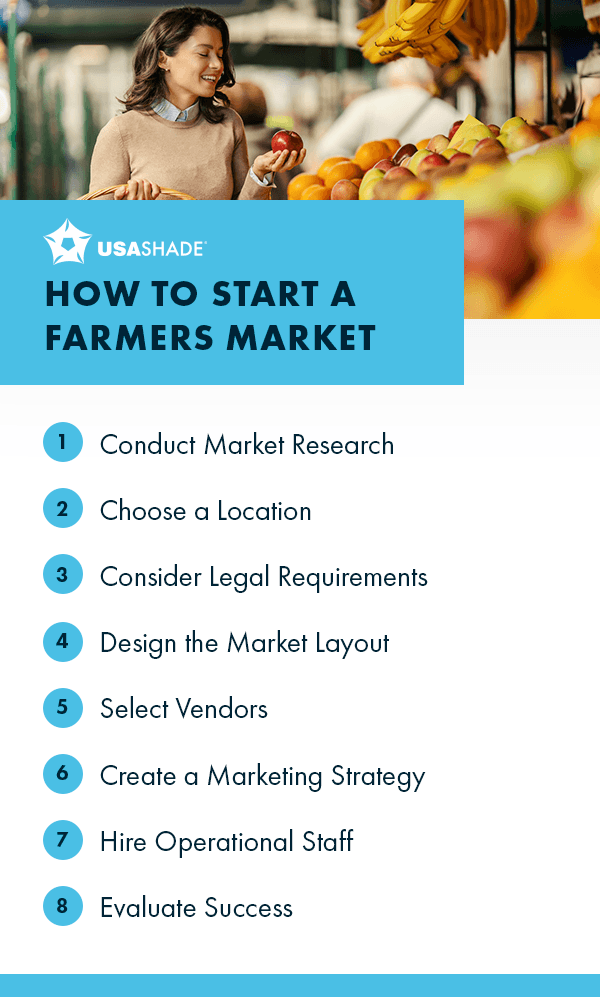
1. Conduct Market Research
Starting a farmers market involves numerous costs, from leasing land to setting up infrastructure. Conducting adequate market research helps ensure project success.
Start by establishing whether there are any existing farmers markets in the area and investigating their product offerings. In addition, your organization can distribute questionnaires within the local community to gain more insights into the target audience. Having a better idea of potential customer ages, genders, average incomes and family structures will help ensure your farmers market meets their product needs.
2. Choose a Location
The location of your farmers market is vital and needs to be accessible for vendors hauling trailers with fresh produce. If designing an outdoor farmers market, your organization will also have to consider access to water and electricity when selecting a spot.
A further consideration for outdoor farmers markets is whether the ground is level. As vendors will likely position products on tables, they will benefit from a flat surface to limit fruits and vegetables rolling onto the floor. Finally, locations that offer adequate protection from the elements will ensure vendors can sell throughout the year. Indoor farmers markets are an option, but installing permanent shade structures at outdoor venues can enhance comfort and protect vendors and customers from the elements.
3. Consider Legal Requirements
The legal requirements for starting a farmers market differ between states — consult local government officials to ensure maximum compliance. Depending on the area, acquiring permits, business licenses or special event permits may be necessary. In addition, there could be specific zoning or signage regulations to follow.
For example, if your organization plans to erect a permanent shade structure over seating areas or walkways, project planners will need to review the legal standards in the region. Purchasing shade sails or cantilever structures from a reputable company helps ensure your organization complies with local building codes.
4. Design the Market Layout
The farmers market layout will significantly impact the customer experience. Ensure a good flow by considering what customers will want to purchase first and positioning stalls selling highly perishable items toward the end. For example, stationing coffee carts at the entrance and stalls selling fresh fish or meat at the exit will add extra convenience for customers.
Vendors may require smaller or bigger booths, so demarcating sections for various sizes allows them to pay for their ideal space. It is also important to be mindful of people of all ages and abilities. Implementing wider pathways and different seating options ensures comfort and accessibility for all.
5. Select Vendors
Customers value being able to buy all the products they need in one place, and recruiting a variety of vendors will help them fulfill this objective. Consider reaching out to local farmers to source fruit, vegetables, meat and dairy products. Community artisans could further diversify the product lineup with home-baked goods and crafts. As customers may visit the farmers market with children or pets, people who offer children’s toys or special pet treats will further enhance the shopping experience.
Make it easy for vendors to apply to sell their products with a simple application form. In addition, your organization should clarify fee structures, booth setups and customer service standards. Clear guidelines will help retain vendors and boost the market’s reputation.
6. Create a Marketing Strategy
An effective marketing strategy is crucial for attracting customers and vendors. It also helps encourage community buy-in and ensures there are minimal objections to starting a farmers market. Some tactics for a robust marketing strategy include:
- Developing a brand identity: Create a logo and tagline that reflects your organization’s vision and mission. Use these branding elements across marketing materials to stand out in customers’ minds.
- Creating a robust digital presence: A user-friendly website enables people to check opening times and learn about the product offerings at the farmers market. Similarly, engaging social media posts can help attract new customers.
- Leveraging email marketing: Experts predict the number of global email users will reach 4.89 billion in 2027, making this channel a highly popular means of reaching customers. Sending monthly newsletters or running targeted campaigns can help improve sales.
- Hosting special events: Seasonal changes or holidays offer excellent opportunities for fun events that attract foot traffic. In addition, hosting live music performances will provide pross-promotion benefits.
Your organization could outsource these tasks to a marketing team or create a team within your organization to take them on.
7. Hire Operational Staff
Farmers markets require an operations team to ensure a seamless experience for customers and vendors. Your organization will need to appoint someone to open and close the market during business hours and oversee general operations. Cleaning staff must also service restrooms, customer seating areas, trash cans and recycling bins. Other staffing requirements include hiring financial professionals to collect vendor fees, manage outgoing expenses and compile reports.
8. Evaluate Success
Periodically measuring the success of a farmers market helps ensure continued growth. Establish relevant metrics to evaluate its success, such as foot traffic, vendor sales and new vendor applications. In addition, assess the financial records and the market’s ability to cover operational expenses.
Another way to determine the market’s success is to enable customers and vendors to provide feedback. Consider positioning a suggestions box at the entrance or exit of the market so that customers can recommend ways to improve. Vendors can also have their say at board meetings. If your organization has created a social media presence for the farmers market, track the user engagement to uncover further insights.
Farmers Market Design Ideas
Farmers markets in the United States have a longer history than the United States itself — the Lancaster Central Market in Pennsylvania opened in 1730! Since then, organizations have implemented various design innovations for a more worthwhile experience. Some ideas include:
- Modular stall designs: By constructing stalls with standardized measurements, organizations gain more flexibility over the layout. This farmers market booth design also ensures the best use of space.
- Interactive zones: Designating specific areas for cooking demonstrations or product tastings adds an interactive dimension to farmers markets. It’s also a good opportunity to educate customers about different produce or artisanal products.
- Sustainable practices: With customers becoming increasingly concerned with sustainable practices, farmers markets have implemented more eco-friendly designs. Many markets are now using reclaimed materials to construct booths and walkways to meet the needs of conscious consumers.
- Collection points for online orders: While farmers markets have traditionally served as in-person shopping experiences, some vendors are now setting up websites to fulfill online orders. Customers can simply collect their produce at a specified pickup point at the market.
- Multiuse spaces: One-off events like seasonal festivals or live performances have different setup requirements. By including free spaces in the layout, organizations are more equipped to meet these different needs.
- Bicycle-friendly designs: Farmers markets typically include parking spaces, yet there’s been a growing trend to implement secure bike racks. Bicycle-friendly designs help further the sustainability of markets.

Weather Resilience in Market Design
For outdoor markets, adequate protection from the sun’s harmful ultraviolet (UV) rays and precipitation ensures a more comfortable experience for vendors and customers. Weather-resilient structures can help overcome this challenge. Here’s what to look for when choosing a shade structure:
- UV protection: The sun’s rays can deter customers and vendors. By selecting structures consisting of high-density polyethylene (HDPE), your organization can block out up to 97% of UV-A and UV-B rays.
- Waterproof properties: Some areas — such as vendor booths — require complete protection from the rain. Installing structures comprising waterproof fabrics ensures vendors and their products remain dry during operational hours.
- Light translucency: Farmers markets benefit from natural light, as it ensures a more welcoming atmosphere where customers can see products clearly. Consider the degree of transparency the fabric allows when choosing a fabric structure.
- Customization: Whether your organization chooses bright colors for a vibrant atmosphere or earthy neutrals to blend in with the scenery, customizing structures helps your farmers market stand out. Shade structures also provide a further canvas for branding.
- Warranties: Installing permanent shade structures is a significant investment, so a reliable warranty is essential. Purchasing structures with coverage for the frame and fabric helps to provide greater peace of mind.
- Low maintenance: Many shade structures feature self-cleaning fabric, making them easy to maintain. Their durable nature also reduces the need for frequent repairs or replacements.
By working with an established shade structure distributor, your organization can enjoy shade structures that meet the market’s exact needs and budget. They can also assist with the steel erection and fabric installation, resulting in a structurally sound solution that stands the test of time.
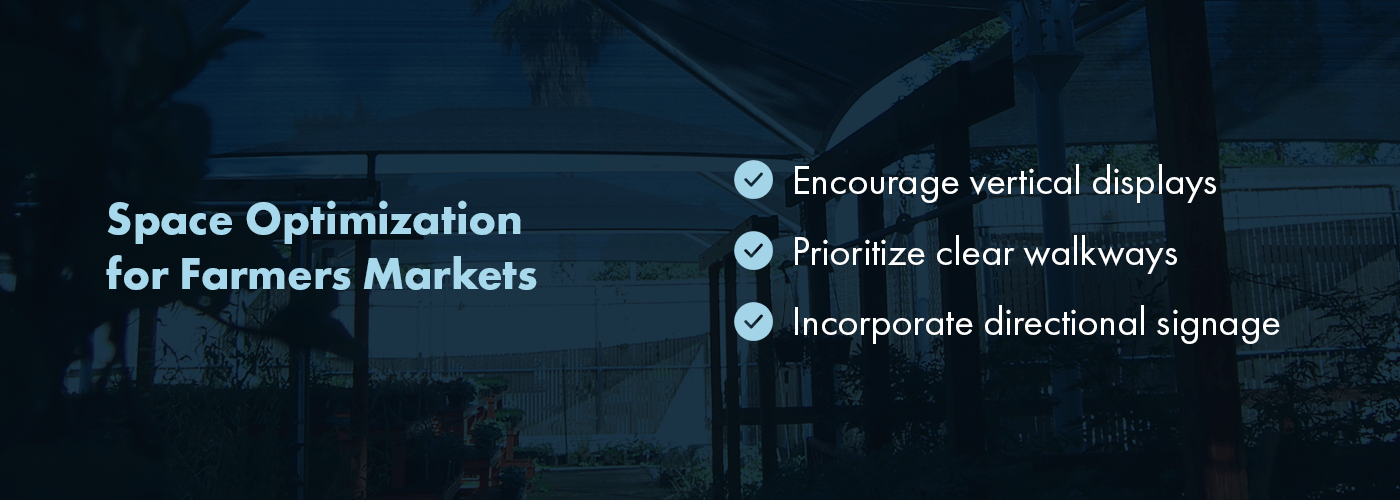
Space Optimization for Farmers Markets
Optimizing available space within a farmers market allows customers to browse products comfortably, leading to more sales. It also ensures the market can accommodate the maximum number of vendors. Here are some tips for using space effectively:
- Encourage vertical displays: Vendors can create more space at their booth with vertical displays. For example, they could use a combination of shelving and hanging baskets to showcase more products.
- Prioritize clear walkways: By ensuring walkways are obstruction-free, customers will have the chance to linger at stalls longer and sample products. Increased dwell time can result in more sales.
- Incorporate directional signage: Signs indicating where customers can find fresh produce or artisanal products help them navigate the space effectively. Use large signs with clear fonts to ensure people can read them in crowded areas.
Designing a layout that optimizes the available space is a critical step before opening the market. However, keep in mind your organization may need to review the layout as the market grows. Adjust the layout each time your farmers market accepts a new batch of vendors to ensure the best use of the space. In addition, survey areas during peak times for congestion and tweak the layout as necessary.
Start a Successful Farmers Market With USA SHADE
Farmers markets are a fantastic addition to communities because they enable people to buy fresh produce and increase employment opportunities. Selecting a location with appropriate shade helps everyone enjoy these benefits year-round.
USA SHADE specializes in durable shade structures for walkways, seating areas and any other areas that require sun protection. We also offer quick-ship products that are made to your organization’s specifications within four weeks, helping your organization open the farmers market on schedule. Take the first step to creating a better environment for vendors and customers by contacting our team today for quality shade structures!


